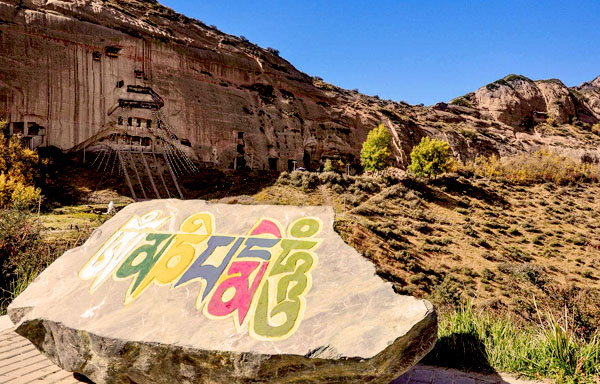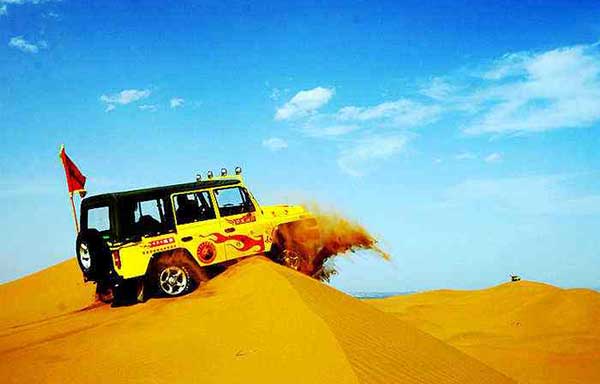- By admin
- In SilkRoadKnowledge
- 2016-06-07
Geographical Setting of the Silk Roads 2
The Trans-Eurasian Steppe Belt
The Steppe Belt is a zone of rolling grassland, steppe being the Russian word for this kind of treeless, grassy plain. It extends from eastern Mongolia west all the way into Romania and Hungary. In prehistoric times, the steppe was inhabited for tens of thousands ofyears by groups of hunter-gatherers who lived off the abundant big game that the grasslands supported. Gradually, hunting gave way to a lifestyle of living off managed herds, which in turn led gradually to the domestication of cattle, horses, sheep, and goats. Hunters had become herdsmen, and pastoral nomadism developed into a highly specialized and sophisticated lifestyle that took maximum advantage of steppe resources.
As with any short-grass prairie, some of the Eurasian steppe can beturned to agricultural use with the application of modern methods, including the steel plow and extensive irrigation. The wheatlands of southern Russia and Ukraine are steppe lands put to the plow. Prior to the invention of such techniques, the steppe extended for thousands of miles in an unbroken belt, only partly interrupted by mountain ranges and forest.
With the mobility afforded by the invention of horse- and ox-drawnwheeled vehicles, and later still by horseback riding, the steppe belt became a vast highway that facilitated the spread of populations, languages, and cultural traits across much of Eurasia long before the caravan trade routes of the more southerly Silk Road were ever imagined. Over the centuries, many groups of horse-riding warriors, including Huns, Turks, and Mongols, conquered their way across Asia, creating sometimes extensive but usually short-lived empires.
China
China can be divided basically into North China and South China, along a line roughly de.ned by the Han and Huai Rivers. North China is characterized by a relatively dry climate, where crops, especially grains such as wheat and millet, grow in the fertile soil of broad plains and terraced valleys. Geographically, North China is dominated by heavily eroded hills and valleys of loess soil in the northwest, and by the vast north-central flood plains of the Yellow River. The Yellow River has overflowed its banks many times throughout history, causing great damage to human settlements but also enriching the soil with a fresh layer of fertile silt. The northern frontier, site of the Great Wall of China, was long guarded against nomadic raiders, and people looked to the Silk Road and sea routes of the northeast for trade. Transportation in North China was land based, using pack animals and drawn carts. South China has a monsoonal climate. Its soils, leached by the heavy seasonal rains, require heavy fertilization, and the staple crop is rice. Transportation was often provided by riverboat or canal barge.
The strong geographical and agricultural differences between North China and South China tended to make the country fracture into northern and southern political entities during the periods of disunion.
Some trade routes in China historically fed into the Silk Road or distributed goods from it. Other trade routes competed with the Silk Road, including maritime trade from southeastern ports across the South China Sea, and a route from the mountainous southwest down the Red River to Hanoi and Haiphong in what is now Vietnam. In China, people were likely to look variously inland, toward Central Asia, or seaward for trade.
The Mediterranean
The Mediterranean is the western convergence point of the overland and the maritime trans-Eurasian trade routes. The Mediterranean channeled widespread distribution of Silk Road goods throughout western Eurasia—just as Northeast Asian sea routes distributed Silk Road goods onward to Korea and Japan. Chinese silk brocade that had come overland for thousands of miles on the Silk Road and Chinese porcelain that had made the trip by sea might eventually be loaded on the same ship in Tyre for shipment westward to Rome or Marseilles.
It is important to see the Mediterranean as a single region, uniting North Africa and southern Europe, and marking the gateway to the Atlantic Ocean. Trading ships criss-crossed in every direction, from at least the early 1st millennium BCE. As early as 500 BCE, Phoenician mariners had likely passed through the Strait of Gibraltar and explored routes both down the Atlantic coast of Africa and up the Iberian coast to the Bay of Biscay.
The Middle East
A region with few firm physical boundaries, the Middle East is generally taken to include all of the territory between the eastern Mediterranean and the western reaches of Persia (modern Iran), extending from the Anatolian (Turkish) shores of the Black Sea in the north to the Arabian Peninsula in the south. It has close ties to the Mediterranean world, to Egypt and North Africa, and to the Silk Road networks of Persia and Central Asia.
Mesopotamia, the area bounded by the Tigris and Euphrates Rivers in present-day Iraq, was perhaps the world’s earliest cradle of civilization, part of the ”fertile crescent” that extends through southern Anatolia and down the eastern Mediterranean coast. Elsewhere, much of the Middle East is desert traversed by caravan routes linking scattered oasis cities, much as is the case along the Silk Road farther east. Silk Road traffic coming from Central Asia passed through the Middle East along many routes and with many destinations.
While in some sense the Middle East was an end-point for the Silk Road, it was perhaps more important a trans-shipment zone. The Middle East also marked the western terminus of the maritime trans-Eurasian trade, as Arab and Indian ships carried goods in both directions across the Arabian Sea. Westbound goods either passed through the Gulf of Oman and the Persian Gulf en route to Baghdad and Damascus, or went to Aden for shipment up the overland route along the western edge of the Arabian Peninsula to Mediterranean ports.
South Asia
India rides on a tectonic plate that has been drifting northward for millions of years. Slamming into Eurasia, India has plowed up the Himalayas and the Tibetan Plateau, isolating South Asia from the rest of Eurasia behind a formidable barrier of mountains. In the northeastern borderlands between Burma, Bangladesh, and China, huge rivers— the Yangtse, Mekong, Irawaddy, Salween, and the Ganges—pourdown from the mountains and the plateau, and then flow through deep parallel valleys, making direct overland contact between India and China extremely difficult. All along India’s northern frontier, caravans used passes through the Himalayan escarpment to transport salt to people of the Tibetan Plateau, bringing animal products, turquoise, and other local goods in return.
India’s principal route inland went through the Indus Valley of the northwest, then over the Khyber Pass or other passes into what is now Afghanistan. Spices, pearls, gemstones, cotton cloth, and other goods were added to the traffic of the Silk Road by this route, and Chinese, Persian, and other Silk Road goods flowed back to India in return. Eastern and western coastal cities of India served as intermediaries on sea routes linking East and Southeast Asia, the Middle East, and points beyond, trans-shipping goods in both directions and adding new goods as well.
Why Choose Us?
We are the top Silk Road tour operator based in Dunhuang, China. We focus on providing well designed Silk Road China Tours with resonable price and thoughtful service.
- Easy & carefree booking
- The best value
- Great travel experience
- Locally operated
Hot Tours
-

6 days Gansu tour to Binglingsi, Xiahe and Langmusi
Tour type : Private tour Price : from *** Destinations : Lanzhou - linxia - Xiahe - Langmusi - Hezuo - Lanzhou -

12 Days Gansu Highlights Tour
Tour type : Private tour Price : from *** Destinations : Xian – Tianshui – Lanzhou – Xiahe – Langmusi – Hezuo – Zhangye – Jiayuguan - Dunhuang -

10 Days Silk Road Classic Tour
Tour type : Private tour Price : from *** Destinations : Xian - Zhangye - Jiayuguan - Dunhuang - Turpan - Urumqi -

5 Days Zhangye - Alxa youqi Highlights Tour
Tour type : Private Tour Price : from *** Destinations : Zhangye - Alax youqi - Zhangye

